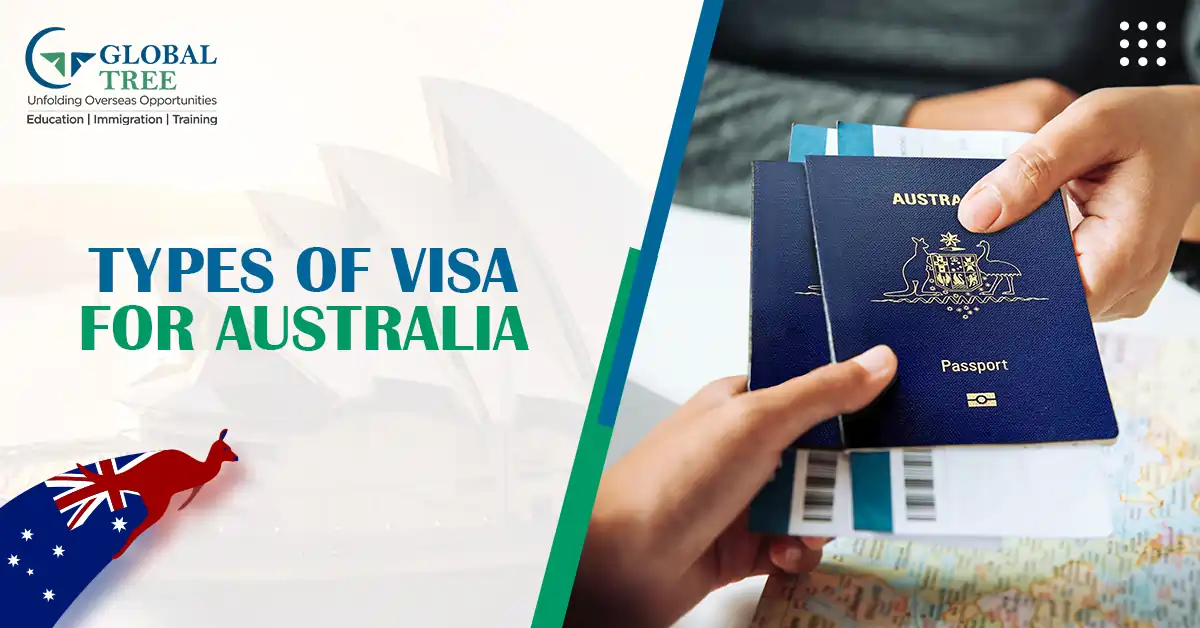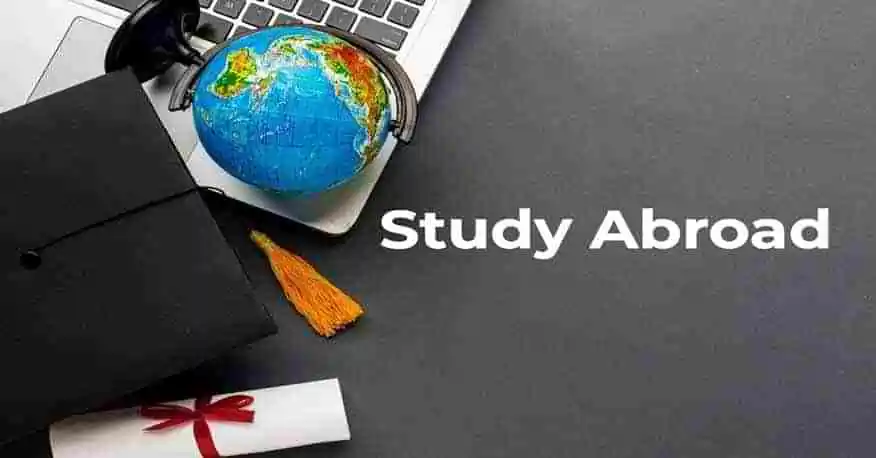All Types of Visa for Australia: A Comprehensive Guide to Apply

- Introduction
- Australian Immigration Visas
- Do I Need a Visa for Australia?
- How Can I Get an Australian Visa?
- Do I Need to Submit Original Documents for an Australian Visa?
- When Should I Apply For an Australian Visa?
- Australian Visa Types
- Can I Appeal a Visa Refusal for Australia?
- After You Get the Visa
- How Long Is the Processing Time for Australian Visa?
- Do I Have to Provide Biometrics For my Visa Application?
- How Long Can I Stay in Australia With a Valid Visa?
- How Long Do You Have To Leave Australia Before Returning?
- Can I Extend an Australian Visa?
- How Long Can You Stay After Your Australian Visa Expires?
- How Much Does an Australian Visa Cost?
- Can I Get a Refund If I Withdraw My Australian Visa Application?
- How Can I Check My Australian Visa Validity And Conditions?
- How to track of My Australian Visa Application?
- How Can I Pay For My Australian Visa?
- What If I Make a Mistake During My Australian Visa Application?
Introduction
The type of Australian visa you seek hinges on the nature of your visit, whether it's for purposes such as tourism, business, employment, education, or visiting a family member.
For many nationalities, obtaining a visa can be conveniently done online, while individuals from other countries may need to complete a traditional paper application process at an Embassy or Consulate.
Australian Immigration Visas
An Australian Visa serves as authorization for your travel to Australia within a specified duration. In contrast to many other nations, Australia doesn't affix physical visa stamps or labels to your passport.
Instead, your visa entitlements are electronically stored in an online database. When you arrive in Australia, immigration officers verify your visa status by accessing this database.
Do I Need a Visa for Australia?
With the exception of New Zealand citizens, who have the option of obtaining a visa upon arrival, individuals from all other nationalities must complete a visa application or seek authorization prior to their journey to Australia.
For brief stays, the appropriate travel document can include an eVisitor, Electronic Travel Authority (ETA), or a visitor visa, depending on your nationality.
[Check here: The countries that allow Indians to travel Visa Free!]
How Can I Get an Australian Visa?
The method for obtaining an Australian visa depends on your nationality:
- You can request an eVisitor visa by using the Australian Department of Home Affairs' online platform.
- For an Electronic Travel Authority (ETA), the official ETA portal of the Australian Department of Home Affairs is where you apply.
- Australian visa applications may be submitted online or in person at an Embassy or Consulate, depending on your preference and eligibility.
Do I Need to Submit Original Documents for an Australian Visa?
During Australian visa application process, there's no need to send in your original documents. If applying online, you'll scan your documents and attach them as electronic files. If you choose to apply on paper, you should provide certified copies. This involves making a duplicate of your document, sending it to an individual who can 'certify' it for you, and having them write 'This is a certified true copy of the original as sighted by me.'
However, it's important to note that not just anyone can certify your documents. It must be done by either an Australian citizen or a non-Australian who works in one of the 'eligible professions,' such as doctors, judges, clerks of court, bank officers, police officers, and so on
When Should I Apply For an Australian Visa?
The timing of your Australian visa application varies depending on the type of visa you need:
- For a tourist visa, it's advisable to apply at least a month ahead of your intended travel date, although giving yourself more time is prudent. While many applications are processed within a few weeks, some tourist visa requests have taken more than four months.
- If you're applying for an eVisitor or ETA, applying about a week before your trip should suffice.
- Long-term visas, such as work visas, require early initiation of the application process since they can take several months to over a year to complete.
Australian Visa Types
Here's a paraphrased version of the various categories of Australian visas:
- Visitor visas: This category is for short-term visitors and includes visas like the Tourist Visa (Subclass 600), Electronic Travel Authority (Subclass 601), eVisitor (Subclass 651), and Medical Treatment Visa (Subclass 602).
- Study and training visas: These are for international students, trainees, and parents or guardians of underage international students. Examples include the Student Visa (Subclass 500), Training Visa (Subclass 407), and Student Guardian Visa (Subclass 590).
Complete Information: How to get Australian Student Visa?
- Parent visas: Issued to parents of Australian citizens, permanent residents, or eligible New Zealand citizens. Varieties include Parent Visa (Subclass 103), Aged Parent Visa (Subclass 804), and Contributory Parent Visas (Subclass 884, 864, 173, and 143).
- Family visas: For minor or adult dependent relatives and carers of Australian citizens, permanent residents, or eligible New Zealand citizens. Examples include Adoption Visa (Subclass 102), Aged Dependent Relative Visas (Subclass 114 and 838), and more.
- Partner visas: Issued to spouses, de facto partners, or prospective spouses of Australian citizens, permanent residents, or eligible New Zealand citizens. Subtypes include Prospective Marriage Visa (Subclass 300), Partner Visa (Subclass 309, 100, 820, and 801).
- Humanitarian visas: These are for refugees who meet Australia's protection obligations and include Refugee Visa (Subclasses 200, 201, 203, 204), Global Special Humanitarian (Subclass 202), Protection Visa (Subclass 866), and more.
- Bridging visas: Allow individuals to stay in Australia while their immigration applications are processed, including Bridging visa A, B, C, and E.
- Work visas: Enable legal employment in Australia and encompass visas like Global Talent Visa (Subclass 858), Skilled Regional (Subclass 191, 187), Skilled Independent (Subclass 189), and others.
- Business and investment visas: Issued to business owners and investors, including Business Innovation and Investment Visas (Subclass 888, 188), Business Owner (Subclass 890), and more.
- Work and holiday visas: For citizens of specific countries with work and holiday agreements, such as Work and Holiday Visa (Subclass 462) and Working Holiday Visa (Subclass 417).
- Transit visa (subclass 771): Allows transit through Australia for up to 72 hours.
- Special Category Visa (subclass 444)
- Resident Return Visas (Subclass 155 and 157)
- Declaratory Visa
These categories encompass a wide range of visa options to cater to different needs and circumstances.
[Also read: Reasons why Australian Student Visas Get Rejected]
Can I Appeal a Visa Refusal for Australia?
If your Australian visa application is denied, you have the option to seek a review of the decision through the Australian Administrative Appeals Tribunal (AAT). It's crucial to initiate this appeal promptly after receiving your rejection notice because delays may result in your appeal not being considered. Typically, you'll have a window of 7 to 28 days to file an appeal.
Your visa rejection letter will provide information on whether you are eligible for an appeal and, if so, it will outline the process and timeline for doing so.
After You Get the Visa
When you obtain an Australian tourist visa, you will receive a Visa Grant Number. This number can be used to access and verify your visa's details on the VEVO system (Visa Entitlement Verification Online). Unlike some countries, you won't receive a physical visa stamp in your passport because all your visa information is stored in an online database.
Nevertheless, it is advisable to print out the visa grant notice, which contains all the essential visa details, to carry with you when you travel. The immigration officer at the airport will use your ImmiAccount or visa number to verify your visa status by checking the online database.
How Long Is the Processing Time for Australian Visa?
The processing duration for an Australian visa varies according to its type. Typically, most tourist stream visa applications are processed in a few weeks, with a maximum of 4 months. In cases where all requirements are met, processing may even be completed within a few days.
For long-term visa applications, the processing time can extend from several months to over a year, contingent on the specific visa type.
[Check out: Top Interview Questions for Australian Student Visa with Answers]
Do I Have to Provide Biometrics For my Visa Application?
Long-term visas in Australia typically mandate proper Australian health insurance coverage. However, for visitor visas, it's usually not compulsory to obtain health insurance, though the Australian government strongly recommends that travelers consider doing so.
How Long Can I Stay in Australia With a Valid Visa?
If you are visiting Australia for tourism or short-term purposes, the typical allowed stay is up to three months at a time:
- An eVisitor and ETA are valid for one year from the date of issue, allowing multiple entries within that year, with each stay limited to three months.
- Tourist Stream Visas can be issued for durations of up to three, six, or twelve months.
For long-term visas related to work, study, or other purposes, the validity can range from a few months to up to five years, depending on your specific circumstances.
How Long Do You Have To Leave Australia Before Returning?
If you possess an ETA or eVisitor, there are no specific rules dictating how long you must stay outside of Australia before returning. The key is to ensure that you depart the country before your three-month stay limit expires. Upon re-entry, you can stay for another three months, as long as it falls within the one-year validity period of your visa.
It's important to note that ETA, eVisitor, and tourist visa holders are not permitted to work in Australia, and they are also restricted from enrolling in study courses lasting longer than three months.
Can I Extend an Australian Visa?
If you are already in Australia and wish to extend your stay, you can apply for a new visa at least two weeks before your current one expires, unless your existing visa has a 'No Further Stay' notice. In such cases, you cannot extend or apply for a new visa unless you have exceptional circumstances.
When you apply for a different type of visa, you will be granted a Bridging Visa, allowing you to remain in Australia until the Immigration Authority reaches a decision on your application
[Check out: Write a Perfect SOP for Australian Student Visa]
How Long Can You Stay After Your Australian Visa Expires?
Unless you have applied for a different visa type, you are not permitted to remain in Australia once your visa has expired. Overstaying, even by a few days, can result in a negative entry on your immigration record, potentially impacting future visa applications.
If you exceed the visa expiry by more than 28 days, you may be subject to an interview with immigration authorities upon departure, and you could face a three-year travel ban.
Of course, exceptions exist in cases where a valid reason for overstaying can be demonstrated.
How Much Does an Australian Visa Cost?
The cost of an Australian visa varies based on factors such as the type of visa, the application method, and the length of your intended stay:
- Visit visa (tourist stream): AUD 145
- eVisitor and ETA: Generally free of charge, except for a AUD 20 (approx.) service fee
- Student visa: AUD 620 (approx.)
- Training visa: AUD 310 (approx.)
- Work visa: AUD 310 to AUD 4,045 (approx.), depending on the specific visa type.
Can I Get a Refund If I Withdraw My Australian Visa Application?
Withdrawing your Australian visa application typically does not result in a refund. Reimbursement is only considered in specific situations, such as:
- If the applicant or a family member of the applicant has passed away.
- If the applicant has been granted another visa of the same category.
- For parent visa applications only: If the applicant has applied for a different type of Australian parent visa and wishes to receive a decision on the second application.
It's important to note that if your visa application is denied, you will also not receive a refund.
[You may like: Find Popular Scholarships For Indian Students In Australia]
How Can I Check My Australian Visa Validity And Conditions?
You can utilize the Visa Entitlement Verification Online (VEVO) system to view the details and conditions of your visa. To access VEVO, you will need one of the following:
- Transaction Reference Number (TRN): This number is provided when you initiate an online visa application.
- Visa Grant Number: If your visa application is approved, you will receive this number.
- Visa Evidence Number: In case you have a visa label attached to your passport, this number is assigned to you.
Additionally, you will need to input your birthdate, passport number, and country of nationality to access your visa information on VEVO.
How to track of My Australian Visa Application?
If you apply online, you can track your application status through the ImmiAccount. As the Department of Home Affairs assesses your application, they will update the process on your account, as follows:
- Incomplete – if you have not yet finished your visa application.
- Ready to submit – if you have completed the application, but have not submitted yet.
- Submitted – the application is submitted.
- Received – the DHA has received your application.
- Initial assessment – the DHA is assessing your application.
- Further assessment – if the DHA requested you to submit additional information.
- Finalised – a decision has been made and you will soon be notified by email or post.
[How to: Successfully Apply for Australia PR Visa from India?]
How Can I Pay For My Australian Visa?
When applying for a visa online, you can make the visa fee payment using your credit or debit card, including options like MasterCard, Visa, American Express, Diners Club, or JCB. However, if you apply at an Embassy or Consulate, they will provide you with instructions on how to make the payment.
What If I Make a Mistake During My Australian Visa Application?
When completing your online visa application, it's crucial to ensure it's error-free before submission. If you spot a mistake before finalizing and paying for the visa, you can easily make corrections. However, if you only notice the error after submission, you may need to resubmit the application, which also means paying the visa fee again.
Fortunately, there's a review step before your application is definitively submitted, allowing you to catch and correct any mistakes. Keep in mind that errors in your passport details can potentially lead to issues at the border, so accuracy is important.









